Uncovering the Hidden Crypto Exposures in Your Investment Portfolio
You may not realize these funds and stocks are exposed to digital assets.
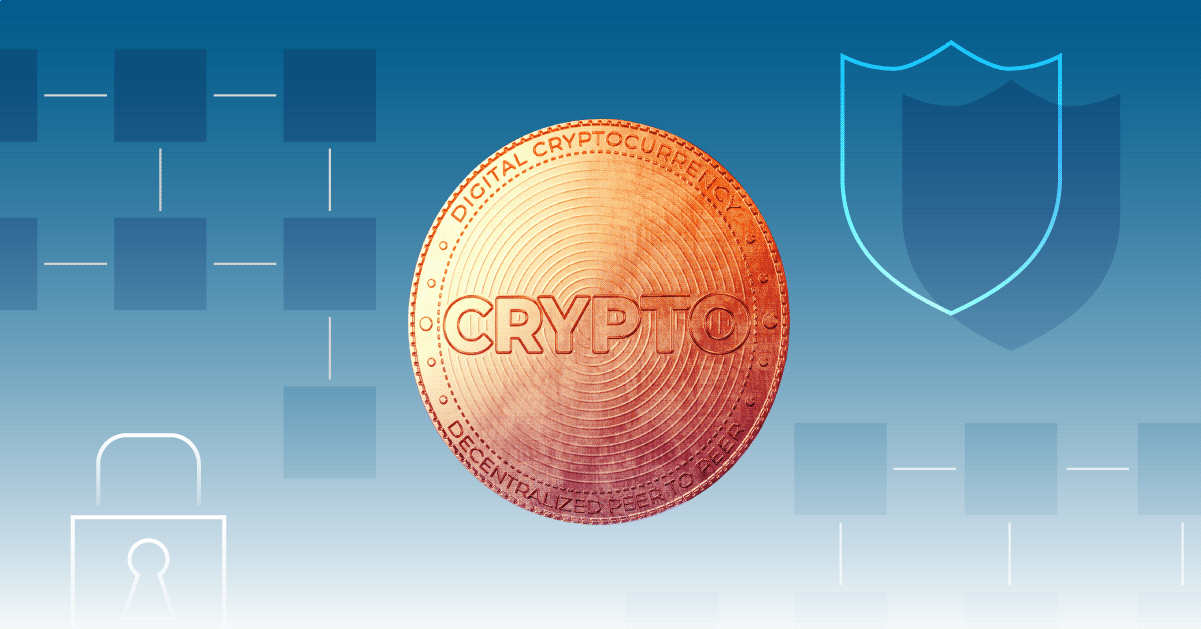
The cryptocurrency market has seen just as much volatility as it has seen promise. From the collapses of luna, FTX, and Three Arrows Capital, to the decline of bitcoin’s value by more than 70% over the course of 2022 (from $60,000 to $16,000), these events have had a ripple effect of financial losses and ultimately led to a decline in investor confidence in cryptocurrency.
When cryptocurrency was on the upswing, some publicly listed companies began offering cryptocurrency-enabled services, such as crypto mining, financial technology solutions, and payment platforms, as well as holding cryptocurrencies on their balance sheets.
However, companies with these “tangential linkages” have witnessed the domino effect of crypto markets such as the closure of Signature Bank SBNY, the bankruptcy of Core Scientific CORZQ, and the fallout of Argo Blockchain ARBKF, whereby investors have lost record sums of money. Unwary investors may find themselves caught off guard with such exposures as business lines of companies may not be immediately apparent.
Our research report, “Intended and Unintended Crypto Exposures,” used a rule-based quantitative algorithm to identify companies in the global universe over and above the Morningstar Global Target Market Exposure Index that may be vulnerable to the unpredictability of the crypto markets. We’ve identified 77 stocks and more than 150 funds that hold this tangential exposure to digital assets in managed investments and common stocks.
Stocks That Are Exposed to Digital Assets
In the table below, we list the global companies that are exposed to the actions of crypto markets, in order of decreasing net exposure. This includes companies that work explicitly in the digital assets space (such as Block SQ and Silvergate Capital SI) as well as companies that either enable the digital assets space or are involved with it in another form, such as Microsoft MSFT and PayPal PYPL.
This provides investors with insights into their portfolio’s exposure to crypto assets.
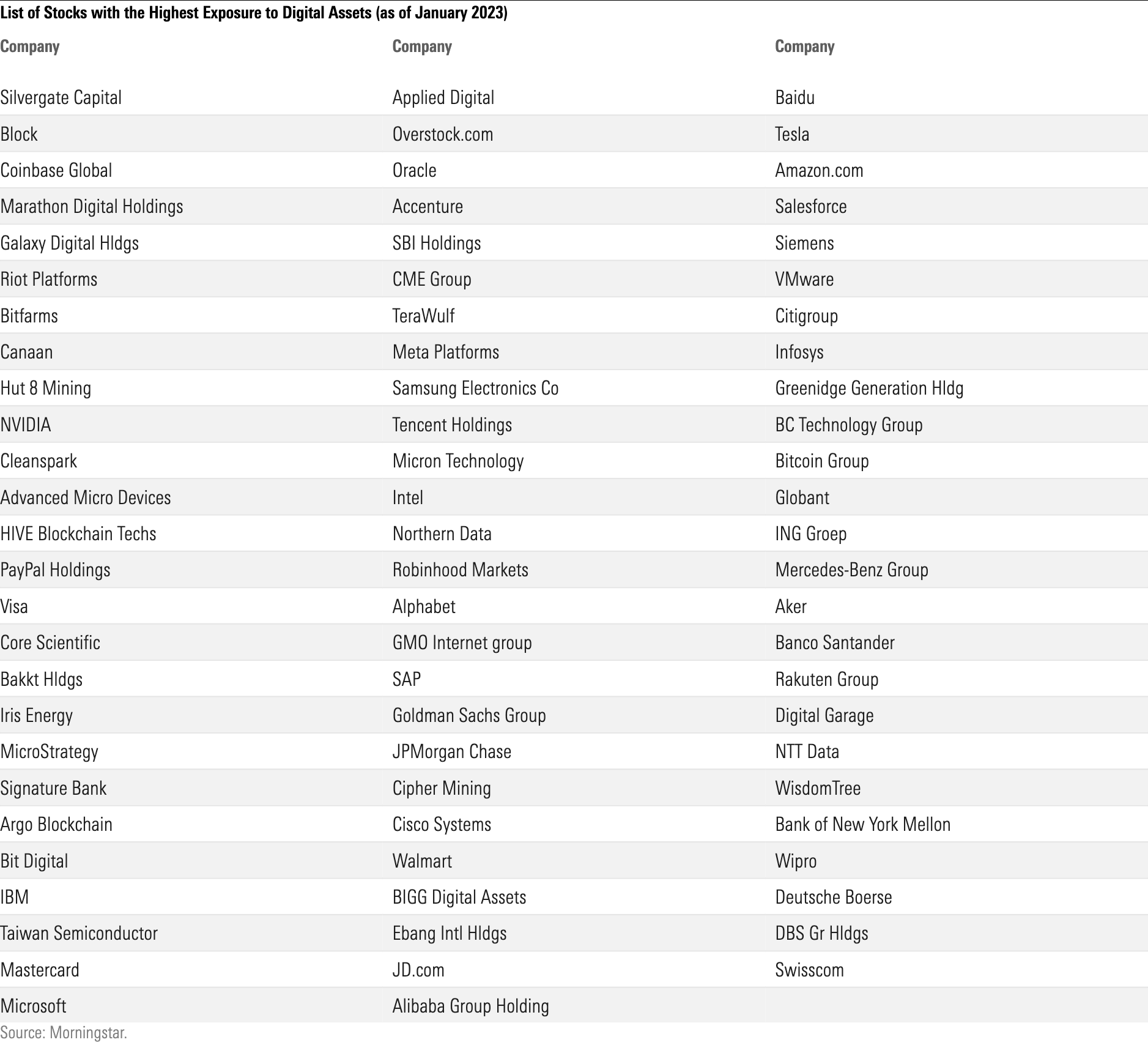
Funds That Are Exposed to Digital Assets
By analyzing the holdings of various funds, we discovered that crypto exposures are gradually finding their way into the portfolios of investors, both intentionally and unintentionally. These exposures amounted to more than $250 billion in global assets under management as of January 2023.
Intentional exposures are easily identifiable as fund managers explicitly declare their willingness to invest in companies with cryptocurrency exposure, which is also reflected in the Morningstar Thematic Fund Landscape.
The unintentional exposures are more intriguing. These exposures are not disclosed by funds, and investors are unaware of them. Our analysis suggests some funds that are marketed to track themes such as artificial intelligence and big data, the metaverse, and cloud computing are unintentionally exposed to crypto and blockchain assets.
The table below shows lists the funds with the most exposure to digital assets, along with their percentage of holdings exposed. The holdings exclude the FAANG stocks—Facebook parent Meta META, Amazon.com AMZN, Apple AAPL, Netflix NFLX, and Google parent Alphabet GOOG—owing to their diverse business lines.
The table serves as a reminder that appearances can be deceiving and that a polished exterior does not guarantee a sound interior.
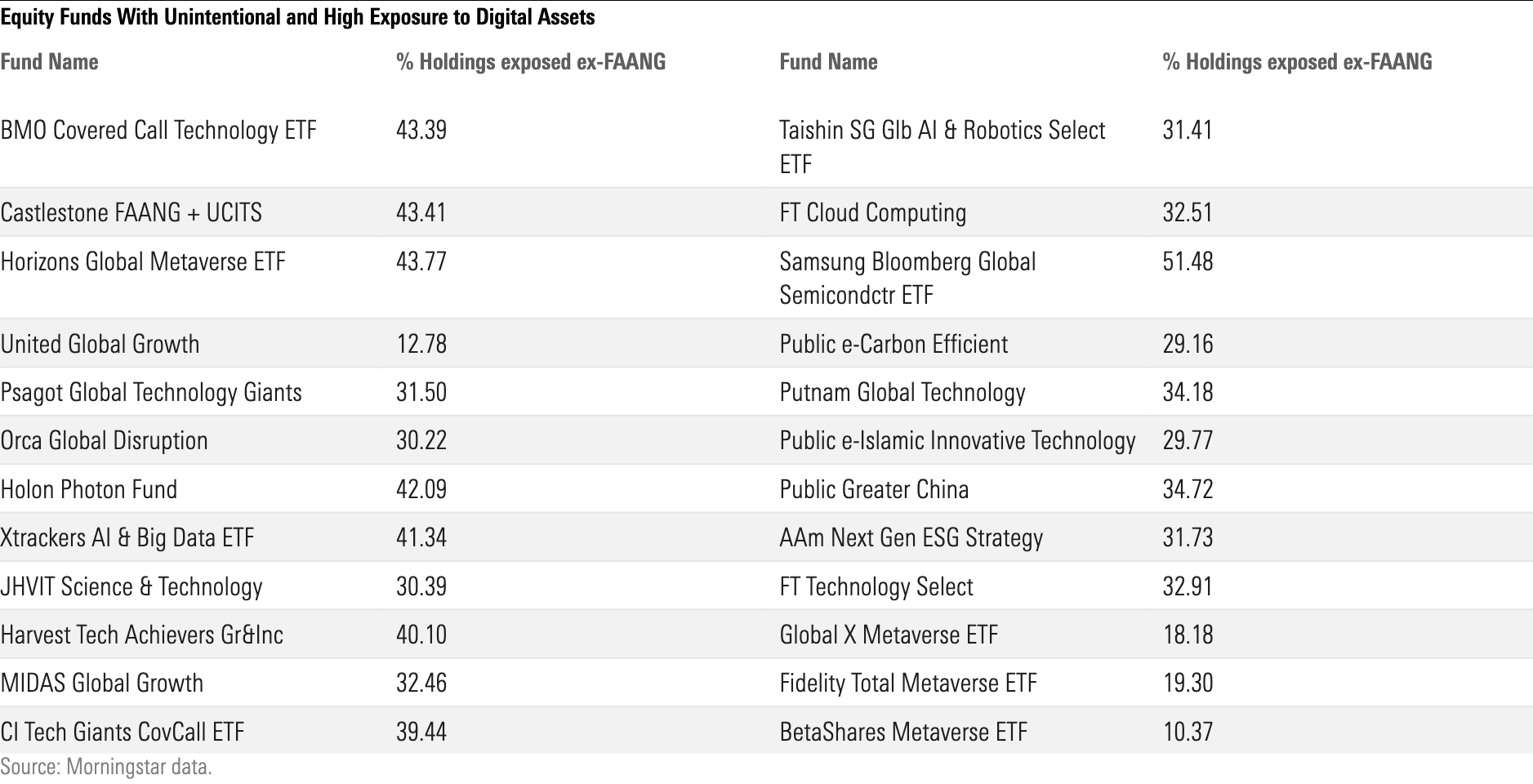
Is There Still Value in Owning Cryptocurrency?
Our research shows that such exposures have not been beneficial for investors, especially during the cryptocurrency downturn of 2022. As shown below, both the intentional and unintentional fund baskets have performed similarly to bitcoin, with returns significantly lower than those of the broader equity markets.
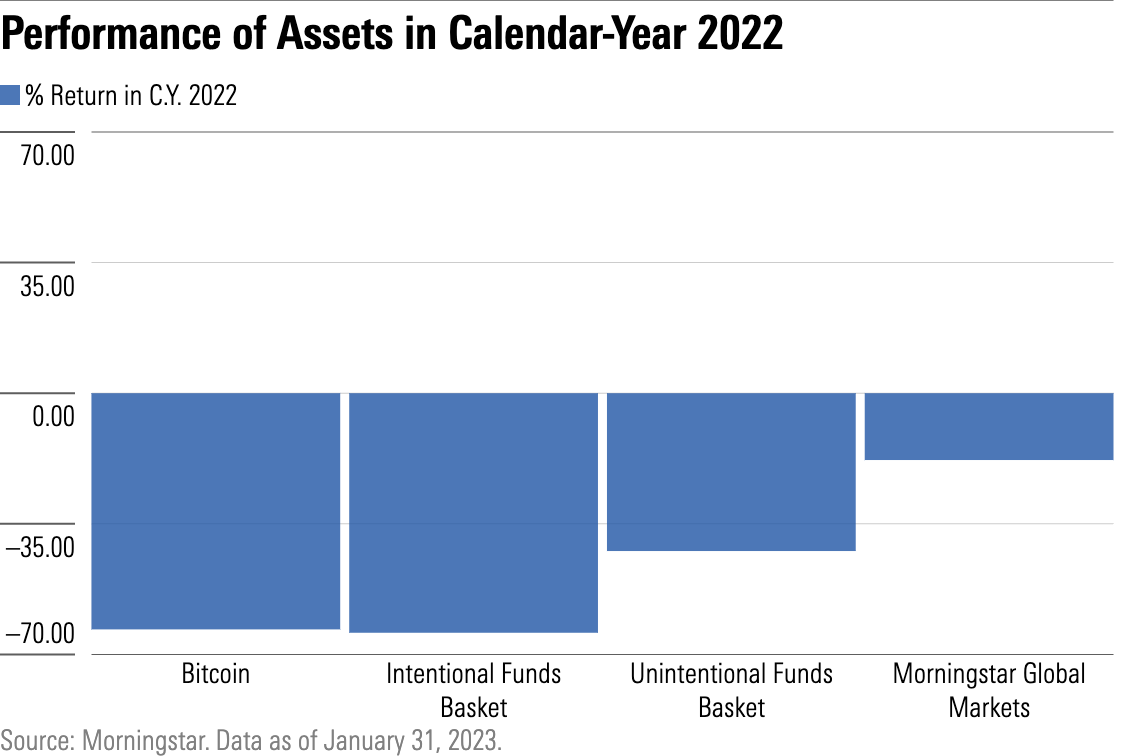
Despite the volatility, some investors have been intrigued by the notion of utilizing digital assets as a hedge against inflation.
However, our research suggests that there is no observable correlation between tangential digital asset exposure and U.S. core CPI inflation, as illustrated in the following visualization.
While the rolling correlation between the two was positive during the bull markets until 2021, the correlation has reversed since the start of 2022. This suggests that there is no conclusive evidence to support the notion that crypto exposures could serve as a reliable hedge against inflation.
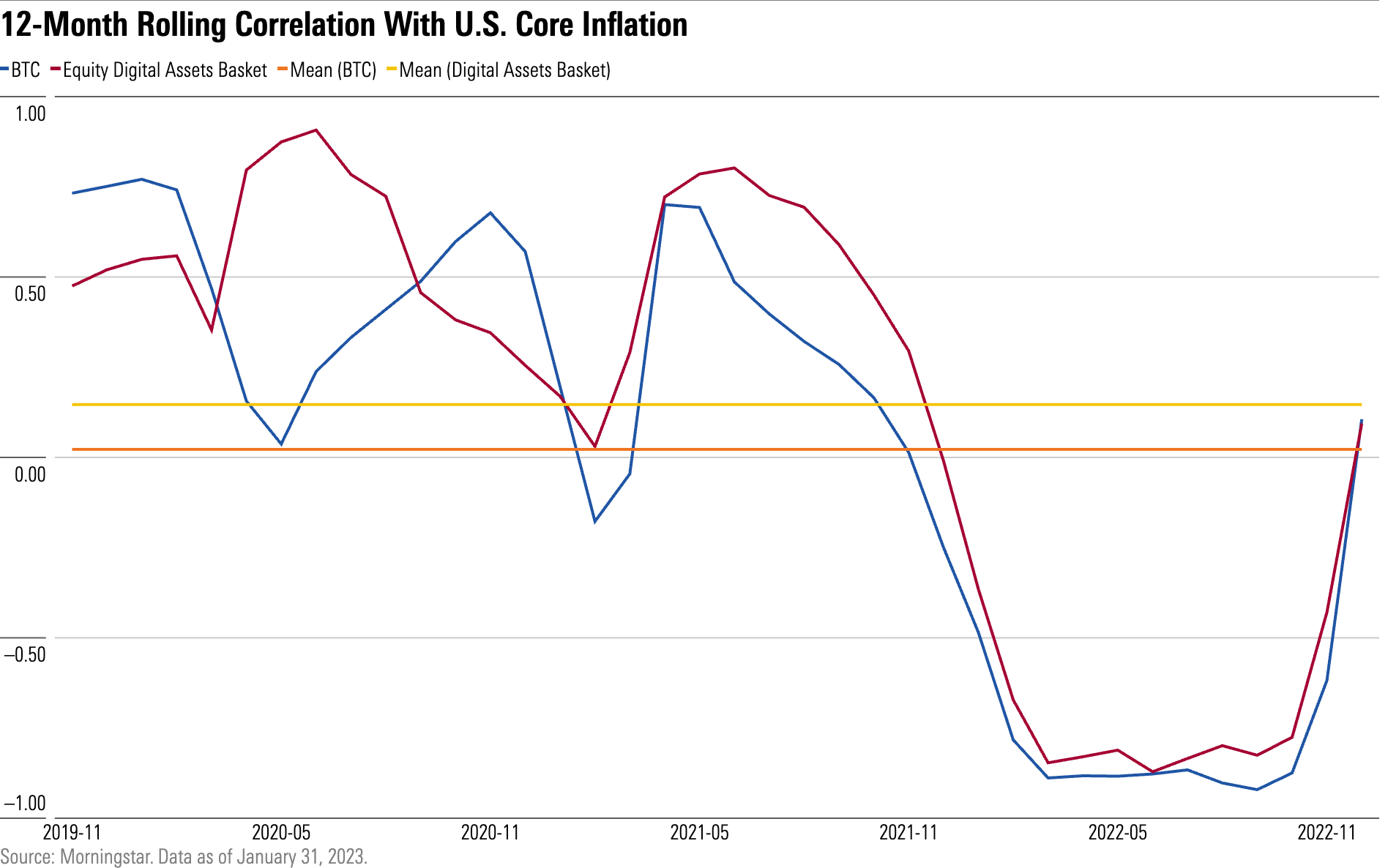
Our research suggests that it may be beneficial for investors to understand the full extent of their exposure to crypto as an asset class, as it can lurk in funds that don’t necessarily market themselves as focusing on digital assets and potentially have a negative impact on portfolio outcomes.
Investors would do well to prioritize thorough due diligence when building their portfolios.
The author or authors do not own shares in any securities mentioned in this article. Find out about Morningstar’s editorial policies.


/d10o6nnig0wrdw.cloudfront.net/04-25-2024/t_d30270f760794625a1e74b94c0d352af_name_file_960x540_1600_v4_.jpg)
/cloudfront-us-east-1.images.arcpublishing.com/morningstar/DOXM5RLEKJHX5B6OIEWSUMX6X4.png)
/cloudfront-us-east-1.images.arcpublishing.com/morningstar/ZKOY2ZAHLJVJJMCLXHIVFME56M.jpg)